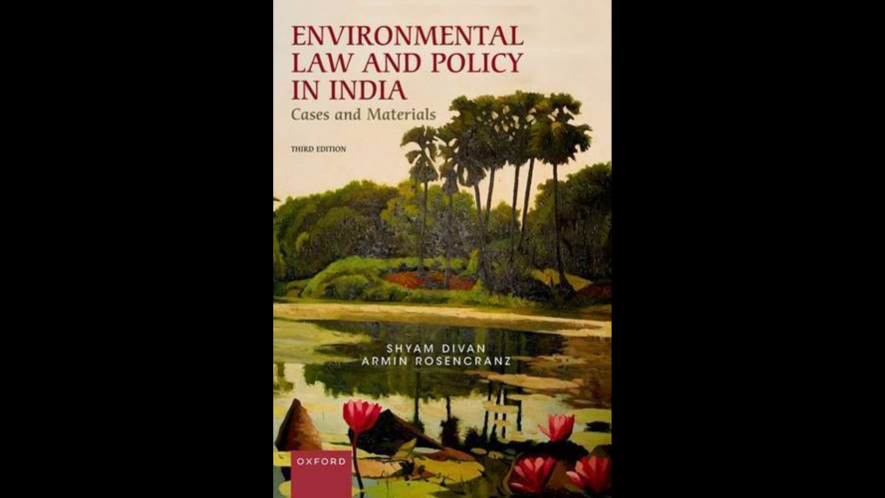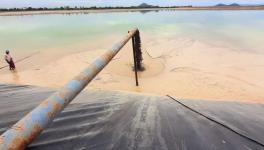Environmental Law and Policy in India: Cases and Materials

Image courtesy Oxford University Press, 2022.
Environmental law and policy in India affects all sections of society. Those most deeply affected by it are the poor. They are the first victims of poor sanitation, polluted air, and contaminated water. Since the 1970s, efforts to protect environmental quality have met with limited success, posing enduring challenges for policy designers and decision-makers entrusted with protecting and preserving natural resources. This edition of Environmental Law and Policy in India (Oxford University Press, 2022) retains the familiar analytical structure of the second edition and includes all major developments since then. It focuses on Indian environmental law, policies, problems, and needs with the comprehensiveness of an American law case book, compiles all the leading cases in environmental law in India with concise extracts of landmark judgments and policy documents, and provides discussions on projects which could potentially degrade the environment.
This volume also covers air and water pollution, forests, wildlife, noise pollution, common property resources and tribal communities, environmental impact assessment, coastal regulations, large projects, urban problems, the National Green Tribunal, hazardous substances, transnational environmental policies, and international environment law. It is interlaced with notes, comments, and questions intended to encourage critical thinking amongst lawyers and law students.
The following is an excerpt from the book.
THE JUDGE AS REGULATOR: TREND-LINES
As Indians work their Constitution with increasing confidence, the competition over the sub-continent’s natural resources intensifies. Individuals, communities and groups using the tools of an open society— the media, the right to access official information, public demonstrations and the courts— strive to protect the environment. Arrayed against citizens and far more sophisticated in gaming the system are corporations, bureaucracies and political decision-makers. The contest to wrest control over land, forests, minerals, water and the commons is continuous and the nation’s constitutional courts must chart the guiding principles to accommodate these competing interests.
Straddling the dispute resolution machinery is the Supreme Court and at a rung below, the High Courts in the states. The NGT, conceived with great promise under a law passed in 2010,20 plays a supplementary role as adjudicator. The judges of these constitutional courts are the final arbiters of environmental disputes. But that is not all. Their role in spurring the evolution of Indian environmental law has been a journey without parallel in world environmental jurisprudence. Since the 1980s, these judges have not only resolved individual cases between citizen and the state, but have also shaped the contours of environmental policy. They refine judicial principles and infuse life into sterile statutes that were (and still are) assiduously ignored by an ineffectual bureaucracy.
The body of case law developed since the watershed tragedy of December 1984, at Bhopal, is testament to the judiciary’s response to the massive ecological degradation that threatened and continues to threaten the quality of life across the nation. But this great surge of judicial energy directed at advancing environmental sensitivity in society may be dissipating. There is no immediate danger of the judges dropping the ball. But burdened by arrears and a faint self- realization that the judiciary cannot indefinitely administer the sub- continent’s resources, there appears to be a drift towards judicial restraint. Judicial fatigue may have replaced the reformist zeal which once characterized the higher judiciary’s approach in many sprawling public interest litigations that dominated the environmental docket. The courts continue to expound lofty principles but seldom apply them with a rigour that would tangibly benefit the affected communities. The final shape of judicial directions is frequently akin to a hedgetrimming exercise, snipping off a few stray vines here and there, whilst preserving intact the project clearance. The unwritten premise of judicial balancing dressed up as ‘sustainable development’ is that economic growth must continue unimpeded.
This ‘hands off’ approach is likely to strengthen. The emerging environmental challenges confronting India in the spheres of climate change, water management, energy and so on, are fraught with complex technical, economic, social and political choices. The Supreme Court was able to dictate the national environmental agenda throughout the 1990s because the executive was remiss in enforcing laws already on the statute book and slow to evolve environmental policies in matters requiring an urgent response. The most egregious instances of widespread air and water pollution by industry were sought to be contained. Although a lack of vision and resources continues to hobble the working of most enforcement agencies, the thicket of socio- economic and technical complexities that characterize emerging issues will likely deter judges from embarking on fresh and elaborate public interest litigations. The stimulus for the next generation of regulation and reform will come from India’s international obligations as the global community works towards adapting to climate change and the growing national economy integrates with the world. These factors, together with the clout of business lobbies more than an activist judiciary, will decide the frame and content of new environmental laws.
There is clear evidence of warming on the Indian sub- continent in the twentieth century and this trend is expected to accelerate in the twenty- first century. While the complexity of climate issues and our partial understanding of factors that impact climate preclude any definite prognosis, there are some clearly discernible trends. All climate models indicate that in this century, surface air temperature in India will increase between 2° and 4° C; summer temperatures in the last two decades of the twenty- first century will be higher than the highest summer temperatures observed so far; precipitation patterns will alter; agricultural yields are expected to decrease and small glaciers in the Indian Himalayas may disappear in the next 50 years. Sea- level rise is a major concern and current global estimates project that a global mean temperature increase of 1° C translates into a sea- level rise of 2.5 metres. In India, the states of West Bengal and Gujarat are most vulnerable to rising sea levels. An increase of 1 metre in the sea level will inundate 6000 kms² of coastal lands. In the case of neighbouring Bangladesh, a 1-metre rise in sea level will cause 17% of the land to be inundated.
What this review suggests is that improved environmental governance and future challenges appear well beyond the reach of ad hoc judge- crafted solutions. The vision and long- term adaptation strategies that must be quickly implemented require an effective national environmental regulator, not a role-playing judge. Perhaps the answer to this puzzle lies in India’s ability to work a democratic constitution. The faith in constitutionalism has meant that over the decades high constitutional functionaries— the Comptroller and Auditor General of India, the Finance Commission and the Election Commission of India, 24 to name a few, have built institutions that deliver. India urgently needs an effective institutional machinery to regulate its natural resources and fulfil the promise of its laws. An independent constitutional functionary responsible for the quality of the national environment may be the best replacement for an over- extended judiciary.
This brings us to a counter current that may prolong judicial oversight. Since as far back as the 1970s, when the first environmental laws were written into the statute book, India has developed only one new institution, the NGT. Institution building is essential for good governance and to promote the Rule of Law in a democratic society. Institutions foster public confidence and fair play. They systemize decision- making and rein in capricious conduct. There is no government agency at the national or state levels that has earned a reputation for responsibly administering natural resources. During this period, certain other regulators such as the Securities and Exchange Board of India (SEBI) and the Telecommunication Regulatory Authority of India (TRAI), warts and all, have successfully created an institutional framework that responds to emerging challenges and commands respect. But no such authority exists for the environment. There is a drought of competence and institutional integrity when it comes to preserving and protecting the entitlements of indigenous people and their cultures, the national forests, wetlands, surface and groundwater, air quality, the coast, marine resources and several other facets of natural resource conservation. This is probably why there appears no immediate end to the disproportionate role of judges.
Who should the judges trust to oversee India’s forests, for instance? Perhaps what is needed after several lost decades is a powerful, independent environmental protection agency or a constitutional functionary. Until such an institution emerges, judges by default will continue to oversee the protection of the country’s natural resources.
This is an excerpt from Environmental Law and Policy in India, Cases and Materials, Third Edition, by Shyam Divan & Armin Rosencranz, published by Oxford University Press, 2022. Republished here with permission from the publisher.
Get the latest reports & analysis with people's perspective on Protests, movements & deep analytical videos, discussions of the current affairs in your Telegram app. Subscribe to NewsClick's Telegram channel & get Real-Time updates on stories, as they get published on our website.
























